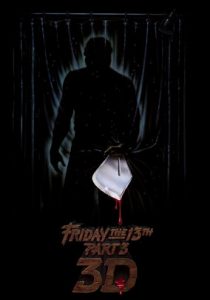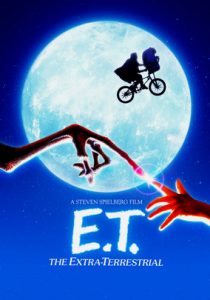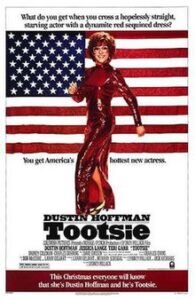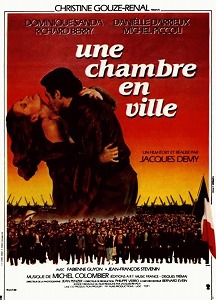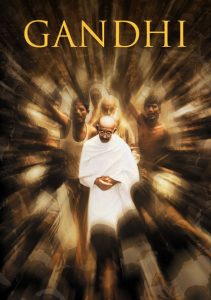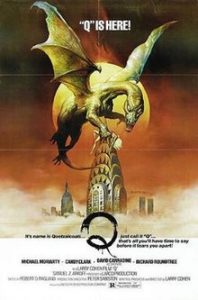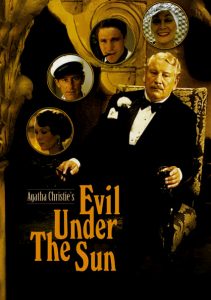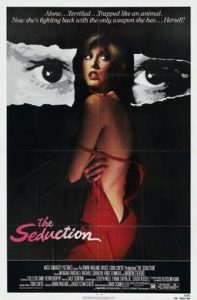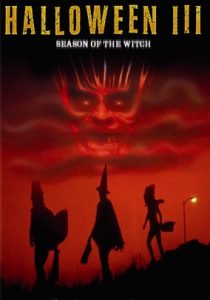Friday the 13th: Part III: 1982
Director Steve Miner
Starring Dana Kimmell, Paul Kratka
Top 250 Films #207
Top 40 Horror Films #29
Scott’s Review #743
Reviewed April 17, 2018
Grade: A-
By 1982 the Friday the 13th installments were becoming an almost annual event, which would continue until the late 1980s.
Still popular and fresh at the time (the novelty would soon wear thin), Part III has the distinction of being released in 3-D, a highly novel concept and just perfect for a slasher film, including sharp weapons to shove at the camera at every turn.
Directed once again by Steve Miner, who also directed Part II, the film charters familiar territory that will certainly please fans of the genre.
The horror gem still feels fresh to me decades after its original release.
The plot originally was intended to copy 1981’s successful Halloween II and capitalize on the return of one central character, Ginny (Amy Steel), and continue her night of terror as she is whisked away to a local hospital following her ordeal at Camp Crystal Lake.
While this plot seems laden with good, gruesome “kill” possibilities (think syringes, scalpels, and other neat medical objects), unfortunately, this was not to be after Steel balked at a return appearance.
Directly following the bloody events the night before, a new batch of teenagers- oblivious to the recent killings- except for tortured Chris (Dana Kimmell), who once was attacked by the crazed killer, travel to Camp Crystal Lake for a weekend of fun and partying.
As Chris teeters between imagining sounds and shadows, traumatized by her past, Jason lurks nearby waiting to pounce on unsuspecting victims. In this installment, Chris is most certainly the “final girl”, a fact that is obvious with the immediate backstory.
The other characters fall in line with traditional slasher stereotypes- the lovelorn couple, the prankster, and a stoner couple. Also, a rival biker gang is thrown in for added drama as they vow revenge on the group following an incident at a convenience store.
A few main differences between Part III and Parts I and II follow: Part III incorporates fewer “point of view” camera shots from Jason’s perspective, and more from the viewpoint of the victims.
The result is neither better nor worse- just different.
This is the first installment in which Jason dons his trademark hockey mask giving the film a slicker feel, and more identity, than Part II did, where Jason mostly wore a burlap sack.
Cleverly, Jason steals the hockey mask from one of his victims.
Finally, as evidenced by the soundtrack, Part III adds a disco/techno beat to the famous “chi chi chi” sounds, giving the music a distinct 1980s feel that the two preceding installments do not have- those feel more like 1970s films.
Memorable slayings include a knife shoved through a victim’s chest while resting on a hammock, electrocution via a basement fuse box, and death via a shooting spear gun.
The main draw to the kills and thus the film itself is the clever use of 3-D technology, which makes the audience feel like the center of the action.
What a treat to see the implements used in the killings coming right at me!
Credit must be given to the added diversity Friday the 13th: Part III incorporates. For the first time (a glorified black extra in Part II does not count) minority characters are featured.
Bikers Fox (Hispanic) and Ali (Black) as well as pretty Vera Sanchez are included giving the film more of an inclusive feel- though each of these characters is killed off.
Enjoyable also is the inclusion of a quick recap of Part II, similar to what Part II did with the original so that the climax of the preceding film gives the viewer a good glimpse of how the action left off.
The screenwriters add a few comical characters, admittedly offed rather quickly into the mix.
I would have loved to have seen a bit more junk food-eating Harold and his nagging wife Edna, for example, before they meet their maker.
Hardly high art, Friday the 13th: Part III (1982) is mostly remembered for some cool, innovative technology, a tiny bit of camp that does not overwhelm the straight-forward horror flavor, and for still seeming fresh before the franchise got old, stale, and tired.
Part III, along with I and II, make for a wonderful trio in one of horror’s finest franchises.
